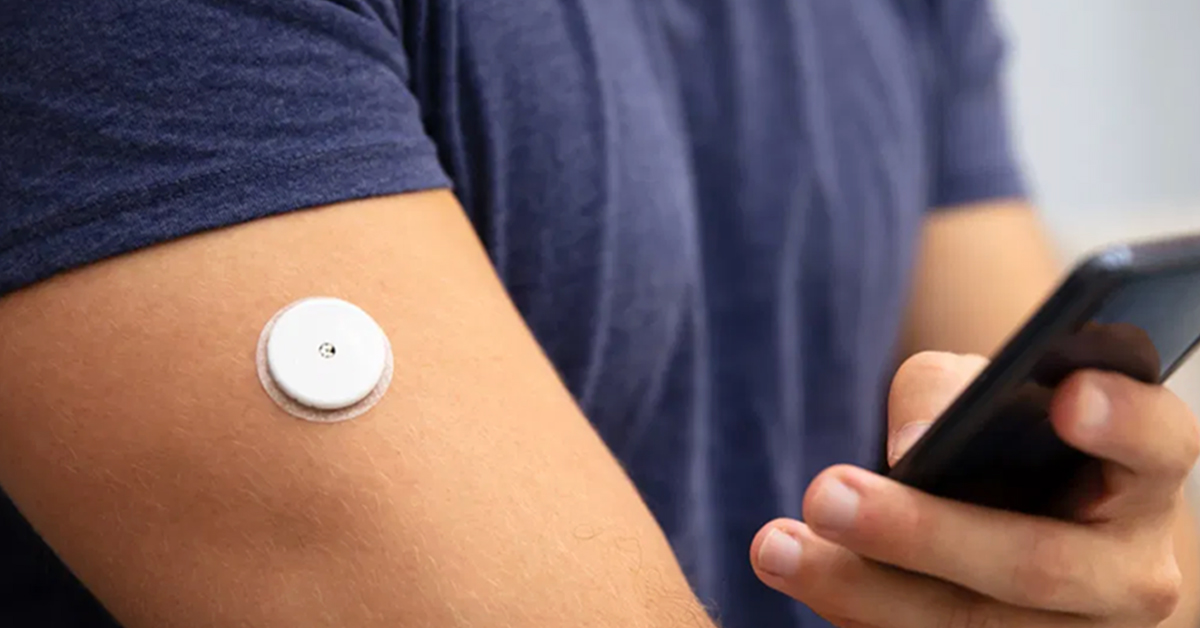Continuous glucose monitors (CGMs) have revolutionized how individuals manage their blood sugar levels. Once a tool predominantly used by those with diabetes, CGMs are now gaining popularity among people with prediabetes and health-conscious individuals. Understanding how these devices work and their benefits can help you make informed decisions about your health.
What is a continuous glucose monitor (CGM)?
A CGM is a small, wearable device that tracks glucose levels in real time. It consists of a tiny sensor inserted under the skin, usually on the abdomen or arm, which measures glucose levels in the interstitial fluid. This sensor sends data to a receiver or smartphone app, providing continuous updates on your glucose levels.
Who is using CGMs?
While CGMs were initially designed for people with diabetes, their use has expanded significantly. Here are some groups that can benefit:
- Those with Diabetes: For people with Type 1 or Type 2 diabetes, CGMs offer precise glucose readings and trends, helping to avoid dangerous highs and lows.
- Those with Prediabetes: According to the American Medical Association, about 88 million American adults—more than 1 in 3—have prediabetes. Using a CGM can help these individuals monitor their blood sugar levels closely, making necessary lifestyle adjustments to prevent the onset of diabetes.
- Health enthusiasts: Many health-conscious individuals have started to use CGMs to understand how their diet, exercise, and stress levels affect their blood sugar with the hope that insights they glean can help them make healthier choices and optimize their overall wellness.
The benefits of using a CGM
- Real-time monitoring: Unlike traditional finger-stick methods, CGMs provide real-time data. This constant stream of information helps users make immediate adjustments to their diet and/or activity levels.
- Trend analysis: CGMs do more than just provide numbers; they offer trends and patterns. Understanding these trends can help predict and prevent spikes or drops in glucose levels.
- Improved health outcomes: According to the American Diabetes Association, people with type 1 and type 2 diabetes who use a CGM have fewer instances of hypoglycemia and a lower A1C.
- Enhanced quality of life: A recent study showed that CGMs can improve the quality of life for people with diabetes by increasing control over blood sugars, providing peace of mind and lowering stress levels
“CGMs are powerful tools that empower people to take charge of their health. By providing real-time data and insights into blood sugar trends, CGMs can help users make informed decisions about their diet, exercise, and lifestyle, ultimately improving their overall health and well-being.”
Alyssa Mattson, RN, BSN, CDCES
Welia Health Diabetes Education Nurse
CGMs as health trackers
The use of CGMs has expanded beyond traditional medical purposes. Many, who some refer to as ‘biohackers’ are using these devices as part of their broader health tracking routines. Here are some ways CGMs are being used:
- Diet optimization: By monitoring how different foods affect blood sugar levels, users can tailor their diets for better health outcomes. This is particularly useful for those following specific diets, such as keto or low-carb.
- Exercise performance: Athletes and fitness enthusiasts use CGMs to track how their glucose levels respond to different workouts, optimizing their performance and recovery.
- Stress management: Stress can significantly impact blood sugar levels. By monitoring these changes, individuals can identify stressors and develop coping mechanisms.
- Sleep quality: Blood sugar levels can affect sleep quality. Tracking glucose levels overnight helps users understand their sleep patterns and make necessary adjustments.
A recent survey showed that 90% of CGM users felt that their use contributed to a healthier lifestyle. While many believe insights from these trackers can help improve overall health and well-being, the jury is out for others, leaving them to ask, Why Perfectly Healthy People Are Using Diabetes Monitors?
Getting started with a CGM
If you’re interested in using a CGM, here are some steps to get started:
- Consult your healthcare provider: Discuss your interest in a CGM with your doctor. They can help determine if it’s the right tool for you and guide you on how to use it effectively.
- Choose the right device: There are several CGMs available on the market, each with its own features. Here are the 7 Best Glucose Monitors, According to Endocrinologists.
- Learn how to use it: Proper use of a CGM involves regular calibration and understanding the data it provides. Many manufacturers offer training resources and support.
- Monitor and adjust: Use the data from your CGM to make informed decisions about your diet, exercise, and lifestyle. Regular monitoring and adjustment can lead to better health outcomes.
Who qualifies for a CGM?
Generally, you may qualify for a continuous glucose monitor if you:
- Need daily insulin shots
- Are experiencing any trouble managing your blood sugar
- Live with hypoglycemia unawareness, a condition that makes it difficult for you to recognize the symptoms of hypoglycemia (or, low blood sugar)
Not all health insurance plans cover CGMs. Medicare covers CGMs for people on insulin therapy or who have had a history of hypoglycemia episodes. Medicaid covers CGMs for people on insulin therapy who either use an insulin pump or require three or more daily injections.
If you have diabetes and are interested in trying a continuous glucose monitor, talk to your healthcare provider and your insurance company about your options.
Next steps
Continuous glucose monitors (CGMs) offer valuable insights into blood sugar levels, improving quality of life for those with diabetes, prediabetes, or even simply a focus on health.
The Welia Health Diabetes Education team is nationally recognized in diabetes self-management through the American Diabetes Association and has extensive expertise in continuous glucose monitoring. To learn more or schedule a consultation, call Welia Health at 320.679.1313 or request an appointment online.













